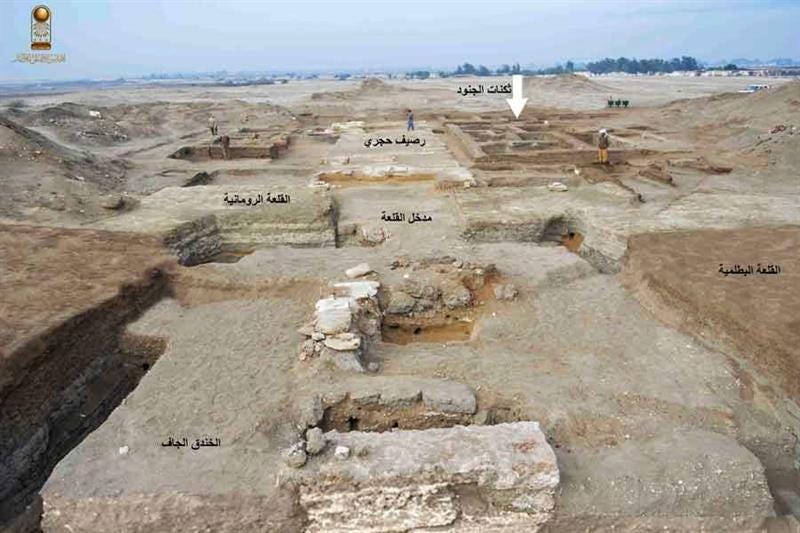Archaeological discovery in Sinai reveals Egypt’s ancient eastern fortifications
Latest News
Reported by Ahram Online:
The Egyptian archaeological mission from the Supreme Council of Antiquities (SCA) has uncovered military defensive structures and a residential area for soldiers at the Tell Abu Saifi archaeological site in North Sinai.
“The discovery is providing new insights into the defensive infrastructure that protected Egypt’s eastern borders during the Ptolemaic and Roman periods,” said Minister of Tourism and Antiquities Sherif Fathy, who highlighted the strategic importance of the site.
"This discovery offers a deeper understanding of the defensive systems established in eastern Egypt and reaffirms Tell Abu Saifi's historical role as both a military and industrial hub across various eras," he added.
The excavations revealed a distinctive architectural design of the eastern gates of both the Ptolemaic and Roman fortresses previously discovered at the site. A large defensive trench, more than two metres deep, was also found at the entrance of the Ptolemaic fortress. Experts believe this feature was part of an adaptable defensive system designed to respond to imminent threats.
According to Mohamed Ismail Khaled, Secretary-General of the SCA, the discoveries help paint a clearer picture of Egypt's ancient defence strategies.
“Sinai has always served as Egypt’s eastern gate and its first line of defence,” he said, adding that the mission also unearthed a well-preserved road stretching over 100 metres in length and 11 metres in width.
Paved with limestone slabs, the road leads from the eastern gate of the Roman fortress to the heart of the site.
It was constructed over an earlier Ptolemaic road, also made of limestone.
On both sides of this road, archaeologists discovered over 500 clay planting circles, believed to have held trees that once lined the entrance to the fortress during the Ptolemaic period.
The site also yielded Roman-era soldiers’ quarters, offering rare insights into the daily lives of cavalry stationed there during the reigns of Emperors Diocletian and Maximian.
Read more here.



